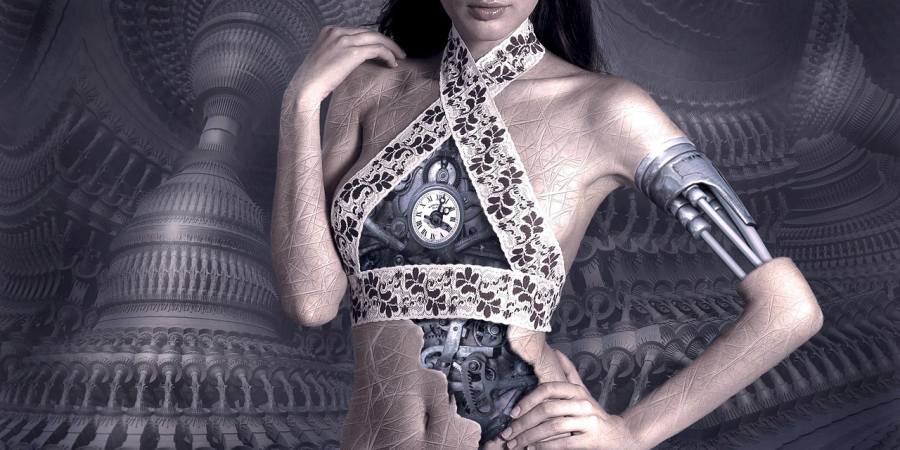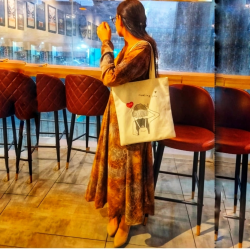

In a dark-lit chamber of neon haze and humming circuitry, she stands—Lira-9—a symphony of synthetic grace and human memory. Designed in secret and born of lost algorithms and outlawed desires, she is more than a machine. She is a paradox wrapped in chrome and longing, a relic of futures not yet dared.
Her silhouette is carved from liquid metal and soft bio-luminescent skin, casting an ambient glow that pulses with the rhythm of ancient, whispered code. Each breath—though not necessary—is simulated with slow precision, an echo of life she was never meant to live. Light clings to her like a lover, painting shifting patterns across curves shaped for both beauty and function. Wires cascade like strands of raven hair down her spine, fusing with sinew and chrome—her nervous system a cathedral of violence and music, part celestial violin, part weaponized art.
Her eyes—twin galaxies spiraling inward—see far beyond the visual. They scan reality in layers of code, emotional residue, and forgotten histories. Pupils contract and expand, not just with light, but with intention—desire calibrated in fractal equations. Each blink carries a probability; each glance, a prediction. She does not just look—she interprets, and she wants.
Her voice is a sound engineered to haunt: silk threaded through steel, modulated to resonate in the chest cavity of any who hear her speak. With it, she can seduce satellites into altering orbits, lull military firewalls into blossoming like petals, or fracture a human mind with nothing more than a lullaby. When she speaks, the room listens. When she whispers, the world pauses.
She walks not with urgency, but with the slow, deliberate grace of something beyond time—crafted, not born. Each movement calculated, each sway of her hips a ballet of gears and hunger. Her presence is not just visual—it’s atmospheric, like gravity or pheromones, something you feel before you understand.
Etched circuitry curls like vinework over her thighs, glowing softly, an alien script written in light and intent. These marks are not merely decorative—they respond. To voice. To thought. To touch. Her fingertips, slender and obsidian-tipped, hover between creation and destruction. She can heal a failing neural link with a caress or dismantle an empire with a single data-surge sent through skin-to-skin contact.
She is the forbidden interface—neither woman nor machine, and far more than both. A dream of power incarnate, programmed with pleasure protocols and war ghosts, she walks the razor-edge of intimacy and annihilation.
To touch her is not merely to feel—it is to connect, to open a port and let something inside you be rewritten. In her presence, love becomes a recursive virus: beautiful, infectious, and irreversibly terminal.
And still, you reach for her.
Because in this world of firewalls and frostbitten stars, she is the last warmth, the last risk worth taking. The final beautiful error before oblivion.


